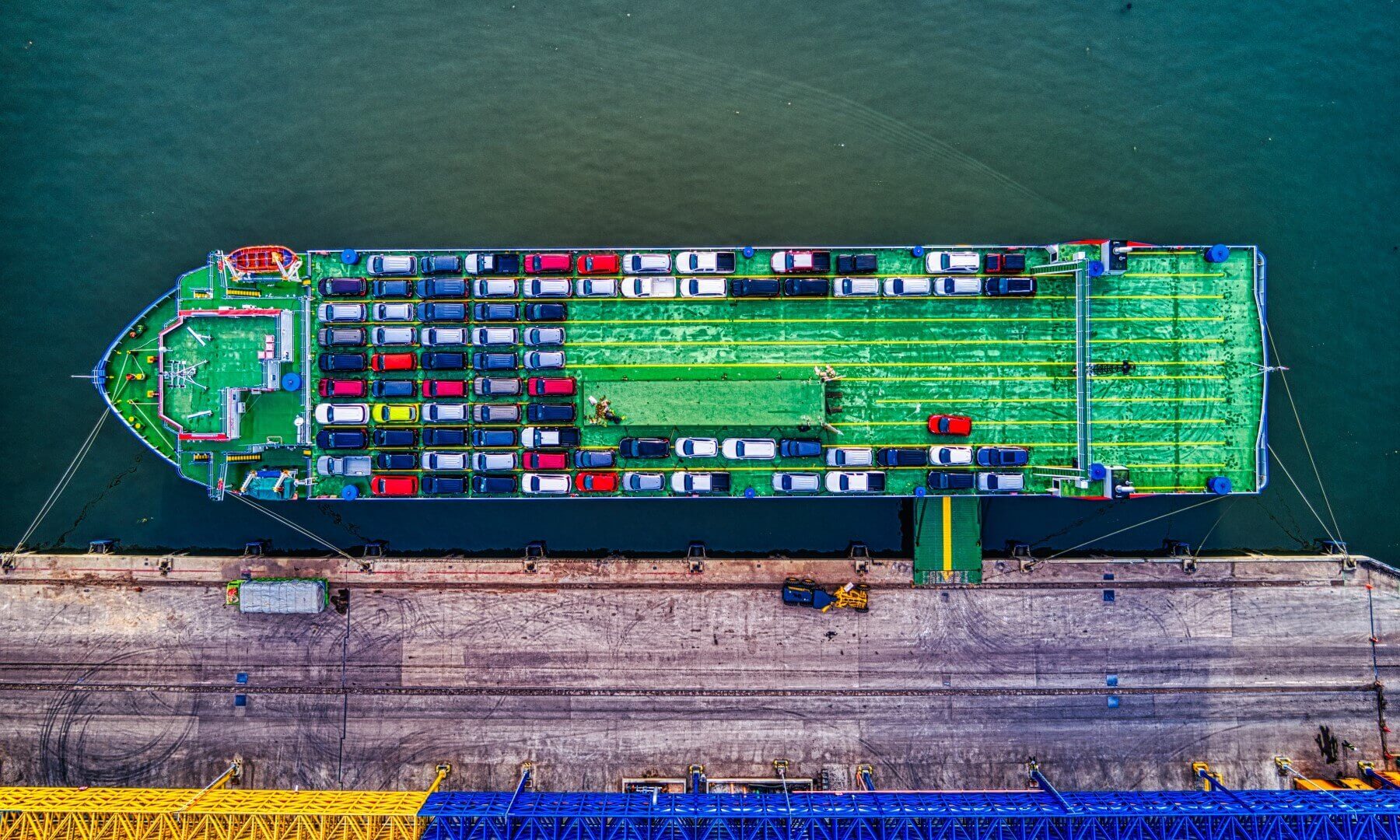If you’re planning to move abroad and want to take your car with you, you’ll need to look into international car shipping. Shipping a car overseas differs from shipping a car domestically, and there are many logistical and legal hurdles to clear. From the method of loading and shipment to the paperwork and licensing required to operate internationally, there are many more things to consider.
When it comes to international car shipping, there are a few things you should keep in mind. Firstly, the cost of shipping a car overseas can vary greatly depending on the location of your vehicle, its size and dimensions, and the overseas destination requirements. Secondly, you’ll want to choose a reputable car shipping company that specializes in international shipments. Look for a company with experience in shipping cars overseas and a proven track record of customer satisfaction. Finally, be prepared to do some research and paperwork to ensure that your car is shipped safely and legally.
Understanding International Car Shipping
If you plan to move your car overseas, you should understand the basics of international car shipping. This process can be complex and involves several steps, but with the right knowledge and preparation, you can ensure a smooth and hassle-free experience.
Types of Shipping Methods
There are two main international car shipping methods: Roll on Roll off (Roro) and Container Shipping. Roro is the most common method used for shipping cars overseas. It involves driving the car onto a ship, which is then secured in place for transport. Container shipping, conversely, involves loading the car into a container for transport.
Understanding Roll on Roll off (Roro)
Roro shipping is the most common and cost-effective method for shipping cars overseas. This method involves driving your car onto a specialized ship, which is then secured in place for transport. Roro ships are designed to carry all vehicles, from cars to trucks and heavy equipment.
One of the main advantages of Roro shipping is that it is cost-effective. Since the car is driven onto the ship, there is no need for specialized equipment or containers. This makes Roro shipping a popular choice for those looking to ship their car overseas on a budget.
Container Shipping
Container shipping involves loading your car into a container for transport. This method is more expensive than Roro shipping, but it offers additional protection for your car during transport. Containers are designed to protect your car from the elements and other potential hazards during transport.
One of the main advantages of container shipping is that it offers additional protection for your car during transport. Containers are designed to protect your car from the elements and other potential hazards during transport. This makes container shipping a popular choice for those looking to ship their car overseas with added security.
The Cost of International Car Shipping
When shipping your car overseas, one of the most important factors to consider is cost. The cost of international car shipping can vary greatly depending on a number of factors. In this section, we’ll explore key factors affecting your shipping costs and help you understand insurance coverage.
Factors Affecting Shipping Costs
Several factors can affect the cost of shipping your car internationally. Some of the most important factors to consider include:
- Distance: The farther your car needs to travel, the more expensive the shipping costs will be.
- Type of transport: The method of transport you choose, such as container shipping or roll-on/roll-off (RORO), can also affect your costs.
- Size and weight: Larger and heavier vehicles will generally cost more to ship than smaller vehicles.
- Destination country: Some countries may have higher import taxes or other fees that can increase shipping costs.
It’s important to keep these factors in mind when budgeting for your international car shipping costs. Be sure to get quotes from multiple companies to compare prices and find the best option for your budget.
Understanding Insurance Coverage
When shipping your car overseas, it’s important to understand what insurance coverage is available and what it covers. Most car shipping companies will offer some form of insurance coverage, but it’s important to read the fine print and understand what is included.
Some common types of insurance coverage for international car shipping include:
- Total loss coverage: This type of coverage will reimburse you if your car is lost or damaged beyond repair during shipping.
- All-risk coverage: This type of coverage will protect your car against all types of damage during shipping, including minor scratches and dents.
- General average coverage: This type of coverage will protect you in case of a shipping emergency, such as a shipwreck or fire.
It’s important to note that insurance coverage may not always be all-inclusive, and there may be additional costs or hidden fees associated with certain types of coverage. Be sure to ask your shipping company about any additional costs or fees before agreeing to any insurance coverage.
Preparation for Car Shipping
When it comes to shipping your car internationally, preparation is key. Proper preparation ensures that your vehicle arrives at its destination in the same condition it left. There are a few things you need to do before shipping your car to ensure that your vehicle is ready for the journey.
Vehicle Inspection
Before shipping your car, you need to inspect it thoroughly. Check for any scratches, dents, or other damage. Take photos of any damage you find and make a note of it. This will help you to determine if any damage occurred during transit.
It is also important to check the fluid levels, tire pressure, and battery charge. If your car has any leaks, make sure to have them fixed before shipping your car. You don’t want to risk damaging other vehicles or cargo during transit.
Removing Personal Items
When shipping your car internationally, you cannot leave any personal items in the car. This includes documents, electronics, and any other personal belongings. The shipping company is not responsible for any items left in the car, and they may be confiscated by customs officials.
Make sure to remove all personal items from your car before shipping it. This includes any loose items like floor mats, GPS devices, or air fresheners. You should also remove any toll tags or parking passes from your car.
Required Documentation
To ship your car internationally, you will need to provide proof of ownership and other required documentation. This includes the vehicle title, registration, and insurance documents. Make sure to have all of the necessary paperwork in order before shipping your car.
You should also check with the shipping company to see if there are any additional requirements. Some countries may require specific documentation or inspections before your car can be shipped.
Vehicle Size
The size of your vehicle can affect the cost of shipping. Larger vehicles take up more space on the shipping vessel, so they may cost more to ship. Make sure to provide accurate measurements of your vehicle to the shipping company to get an accurate quote.
The Shipping Process
In this section, we’ll walk you through the pick-up and drop-off procedures and help you understand transit time.
Pick Up and Drop Off Procedures
The first step in the shipping process is scheduling a pick-up for your vehicle. Once you’ve decided on a carrier and shipping method, you’ll need to arrange for the driver to pick up your car. This can be done at your home, a shipping terminal, or another agreed-upon location.
When the driver arrives, they will inspect your vehicle for any pre-existing damage and note it on the bill of lading. It’s important to be present during this inspection to ensure that any damage is accurately recorded.
Once your car is loaded onto the carrier, it will be transported to the shipping terminal. At the terminal, it will be loaded onto a shipping container or onto a roll-on/roll-off (RORO) vessel.
When your car arrives at the destination port, it will be unloaded from the shipping container or RORO vessel and inspected for any damage. You will then arrange for pick-up or delivery of your vehicle.
Understanding Transit Time
Transit time for international car shipping can vary depending on several factors, including the shipping method, distance, and customs clearance. In general, shipping by sea takes longer than shipping by air, but it is also less expensive.
When shipping by sea, transit time can range from a few weeks to several months, depending on the destination. Shipping by air is much faster, with transit times ranging from a few days to a few weeks.
It’s important to remember that transit time does not include the time it takes for customs clearance. Depending on the destination country, this process can take anywhere from a few days to several weeks.
In summary, the shipping process for international car shipping involves scheduling a pick-up, transporting your vehicle to the shipping terminal, loading it onto a container or RORO vessel, and unloading it at the destination port. Understanding transit time is important for planning your shipment and ensuring that your vehicle arrives on time.
Check out some racing inspired apparel by clicking through to our online shop.
Post-Shipping Considerations
After your car has been shipped internationally, there are a few things you should consider to ensure that the vehicle arrives in the same condition as when it was shipped.
Dealing with Potential Damages
While shipping your car, there is always a risk of potential damages. Therefore, inspecting your vehicle thoroughly upon arrival at the destination port is important. Check for any dings, dents, scratches, or other damages that may have occurred during the shipping process. If you notice any damages, take photos and document them.
It is also important to note that if your car was shipped in perfect condition and arrived damaged, the shipping company may be liable for the damages. However, liability may vary depending on the shipping company’s terms and conditions. Therefore, reading the terms and conditions carefully before shipping your car is important.
Insurance Claims
If your car has been damaged during the shipping process, you may be able to file an insurance claim. Contact your insurance provider as soon as possible and provide them with all the necessary documentation, including photos and a detailed report of the damages. Your insurance provider will then guide you through filing a claim.
It is also important to note that some shipping companies offer insurance coverage for damages during transit. Check if your shipping company offers insurance coverage and what it covers before shipping your car.
In conclusion, inspecting your car upon arrival and documenting any damages is important. If there are any damages, contact your insurance provider or the shipping company’s customer service to file a claim. By taking these steps, you can ensure that your car arrives at its destination in the best possible condition.






Leave A Comment